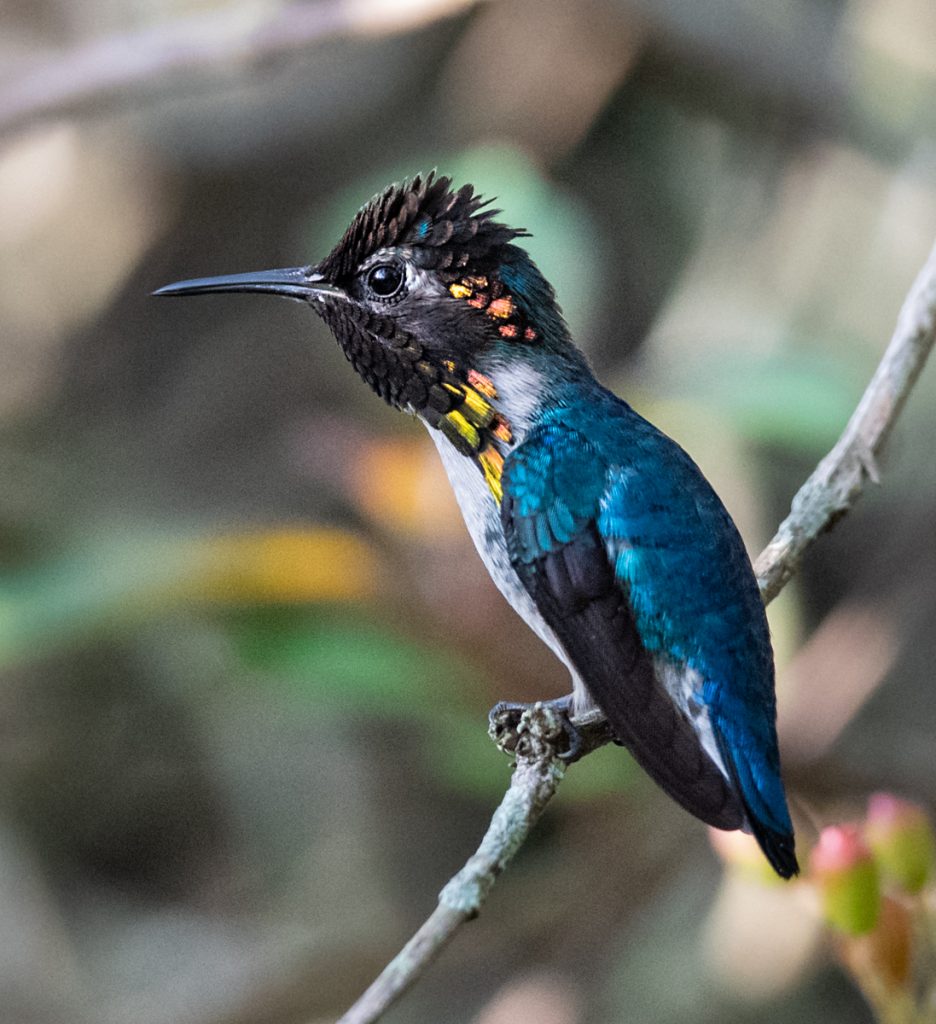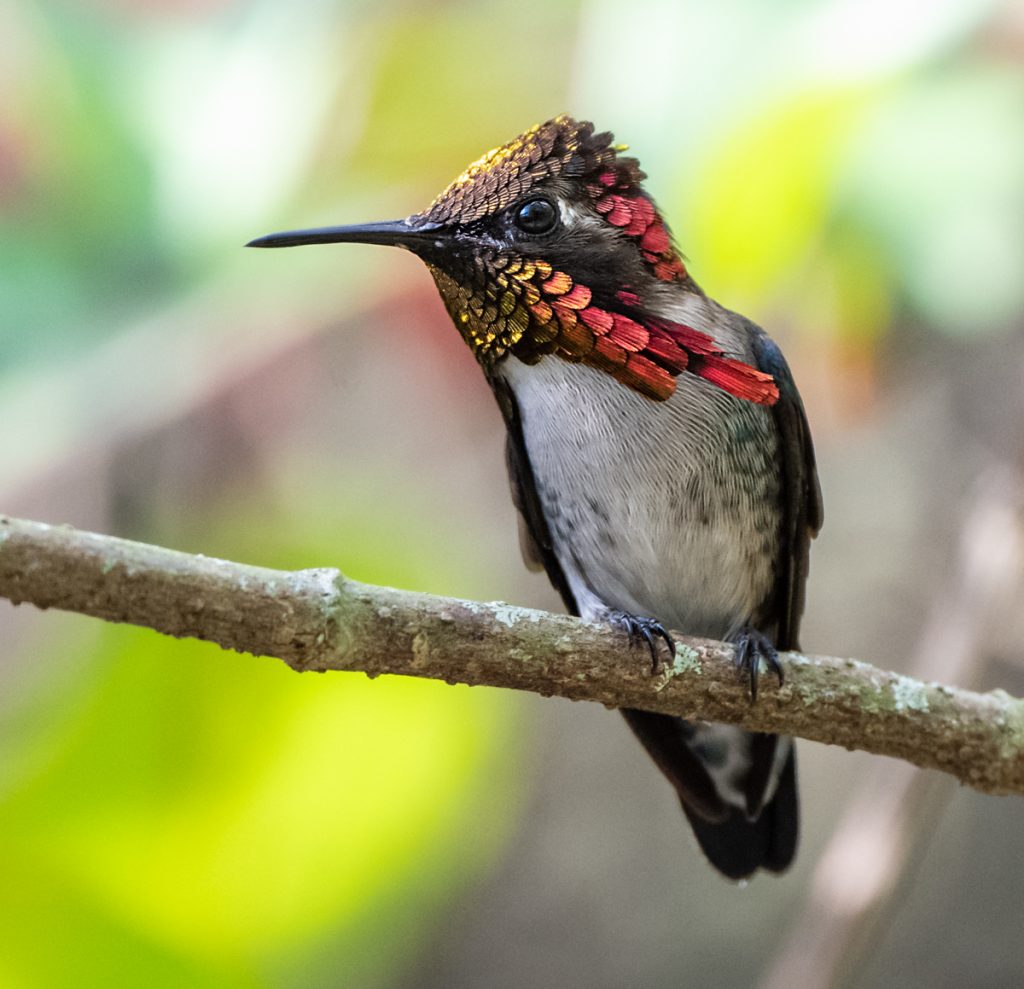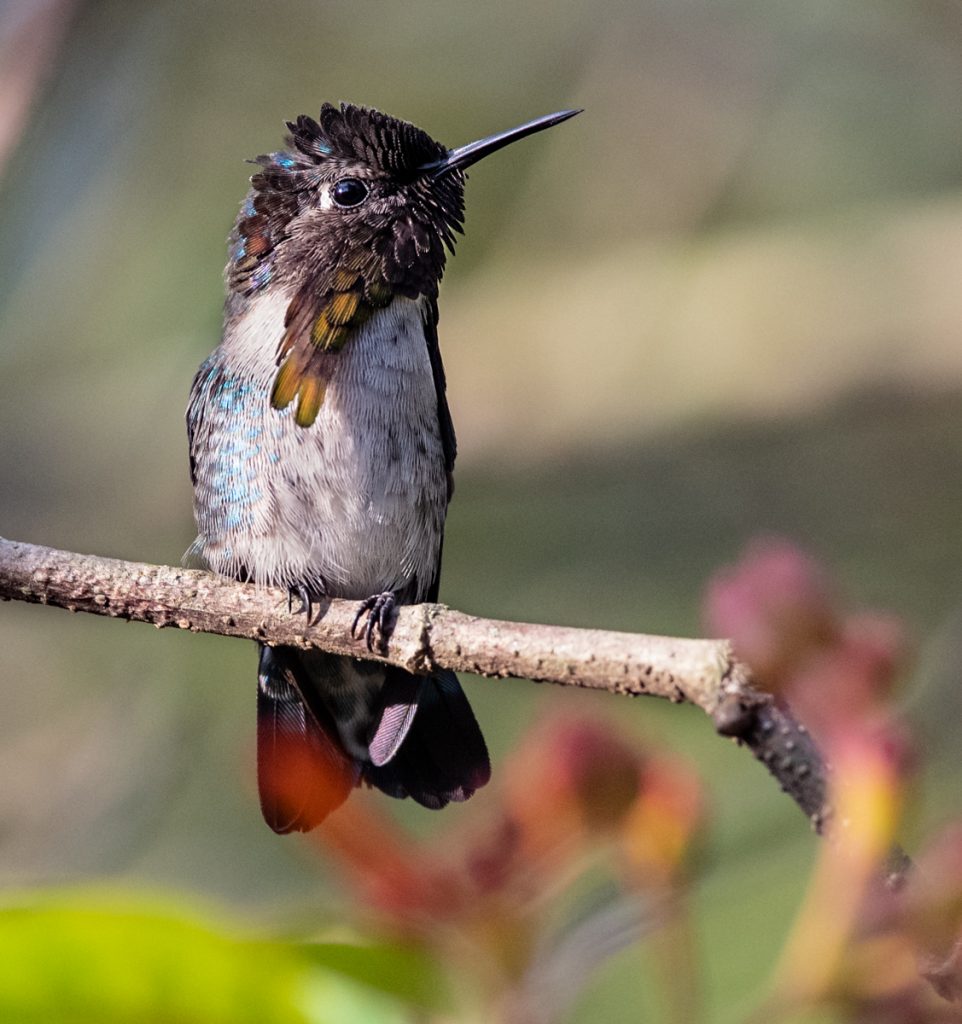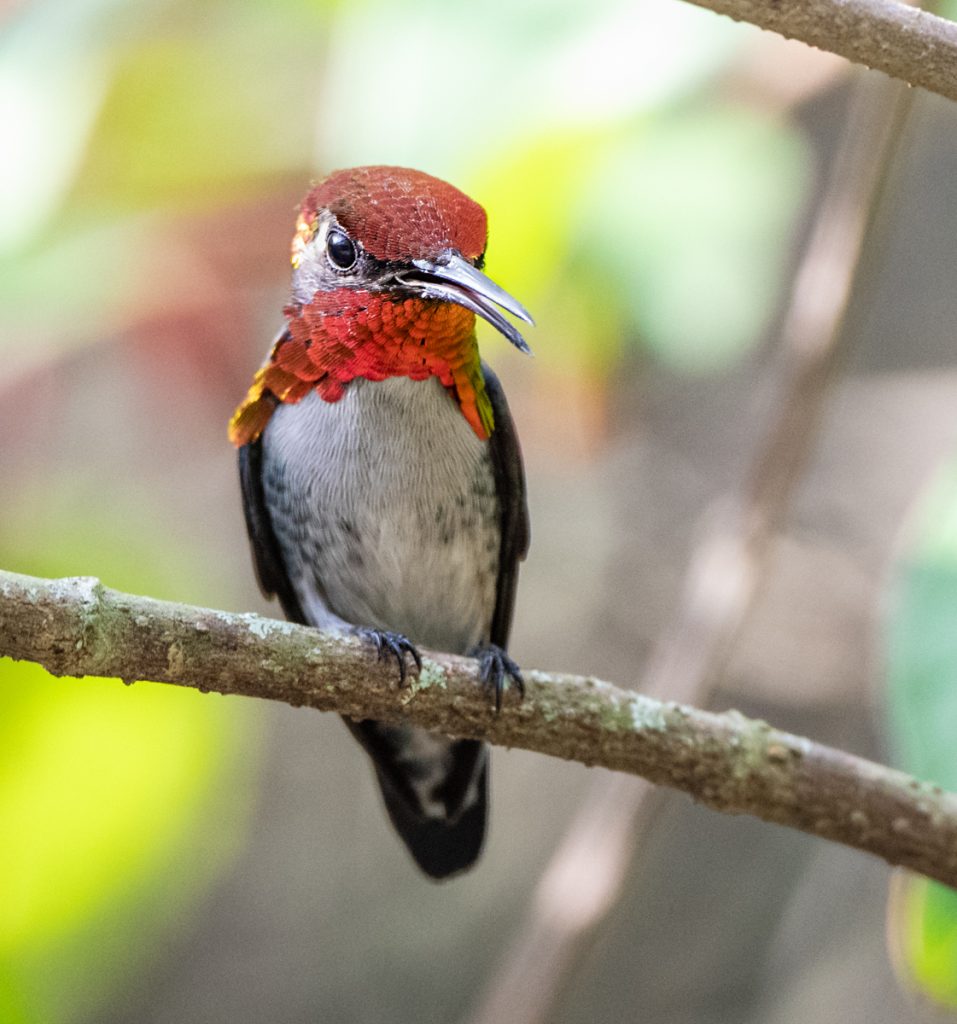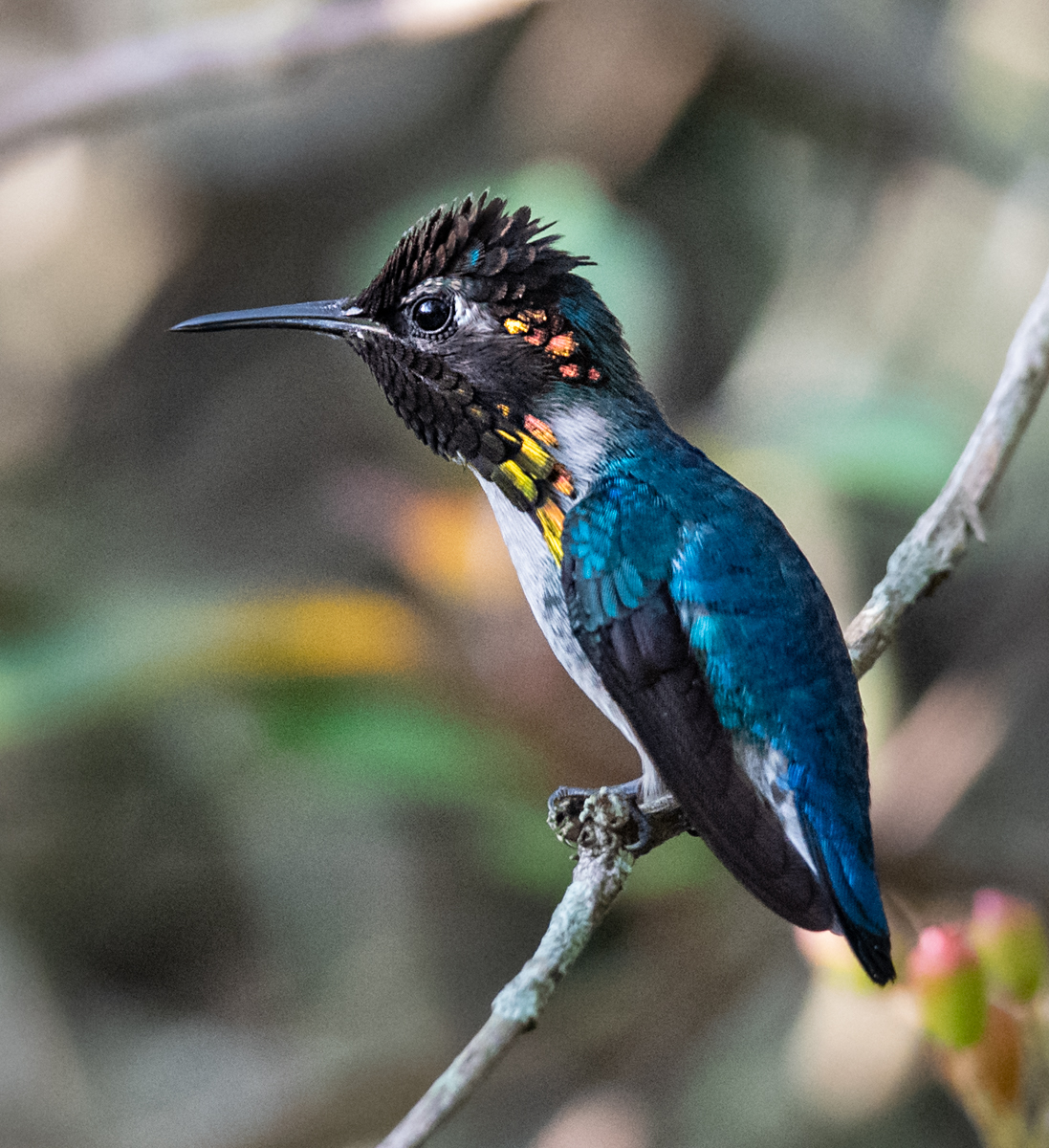
Cuba is a biodiversity hotspot and home to some of the most unique bird species in the world, including the beautiful, endangered Bee Hummingbird. Endemic to the Cuba Archipelago, the Bee Hummingbird is often found in the patchy brush and thickly grown shrubs in isolated steep-sided hills called Mogotes in eastern Cuba and in Cuba’s UNESCO Biosphere wetland reserve, the Zapata Swamp.
Small Hummingbird or Small Insect?
This tiny bird is as the smallest hummingbird in the world and that is not the only fascinating thing about this beautiful creature. Other small hummingbirds appear quite thin, but the Bee Hummingbird is plump, rounded, and weighs in at less than two grams. That is half the weight of any other backyard hummingbird. It’s so miniature, it is often mistaken for an insect. In fact, the Bee Hummingbird is scarcely larger than a bumblebee. The females of the species grow to 2.4 inches in length, 6cm, while the males only reach 2.2 inches in length, 5.5 cm, with a wingspan of 1.5 inches. In comparison, a cicada grows to 2 inches.
A Colorful Jewel in Bird Photography
The brilliant iridescent colors of this tiny hummingbird give it the magical appearance of a moving jewel. However, its radiance is not always apparent and depends on the angle at which the bird is viewed and the quality of light. The breeding male is distinct in color with its head, chin, and throat turning a beautiful pink-red color. The female and non-breeding male are largely pale grey and white with bluish-green upper plumage. The main difference in the appearance of the sexes is the color of the tips of their tail feathers. The male’s are black and the female’s white.
These Tiny Birds Impress in Flight
Bee Hummingbirds are spectacular to watch! While in flight, their tiny wings beat up to 80 times per second. They are even faster during courtship when their wings speed up to 200 beats per second. Hummingbird wings can rotate 180 degrees in all directions. They are the only birds with the ability to fly backward, straight up, and upside down. If that is not impressive enough, these tiny birds are able to fly for up to 20 hours without a break. With such rapid and constant flapping of their wings, they must refuel every 10 to 15 minutes. consume about half their body weight in nectar and small insects and spiders every day.
The Bee Hummingbird’s Struggle
As the world’s smallest bird, they are susceptible and vulnerable to a wide range of threats and predators. They are currently considered an endangered bird and are listed as near threatened on the IUCN (International Union for Conservation of Nature). The loss of habitat due to ranching and deforestation play a big part of this conservation struggle, and by far has the biggest impact, though their miniature size also makes them vulnerable to other threats. Their small size alone leaves them vulnerable and prone to attacks from other species, that treat them as if they were an insect. They must be vigilant and not only watch out for larger birds but also bees, wasps, frogs, fish, and even spiders. Their primary predators are larger birds like hawks, kestrels, and orioles.
The key to the best bird photography of the Bee Hummingbird
Shooting this hummingbird can be a challenge. It is critical that you keep shooting and capturing the bird at different angles and at every turn of the head. The most incredible thing about this bird is that it looks like a totally different bird at different angles under different lighting conditions. The way the feathers lay changes the way it absorbs light depending on where you as the photographer are standing. It is most ideal to do bird photography in bright overcast light, but this is the case especially for the Bee Hummingbird. Direct sunlight will almost always give the image too much contrast. Since the bird is so small,you want the details of every feather and its colors to really pop in a photograph where the bird can be seen on a larger scale.
Currently, there are no specific programs aimed and in place to conserve the Bee Hummingbird, though Cuba’s general conservation efforts have helped this little hummingbird thrive. Cuba is the most biologically and ecologically diverse island of the Caribbean and has 263 protected areas, about 22% of the island’s total land. Cuba has determined to keep its annual deforestation rate at 0.1 percent but has become harder with mass tourism, economic ventures, and growth. Nonetheless, Cuba’s conservation efforts at large have been impressive and have allowed its ecosystems to thrive.



